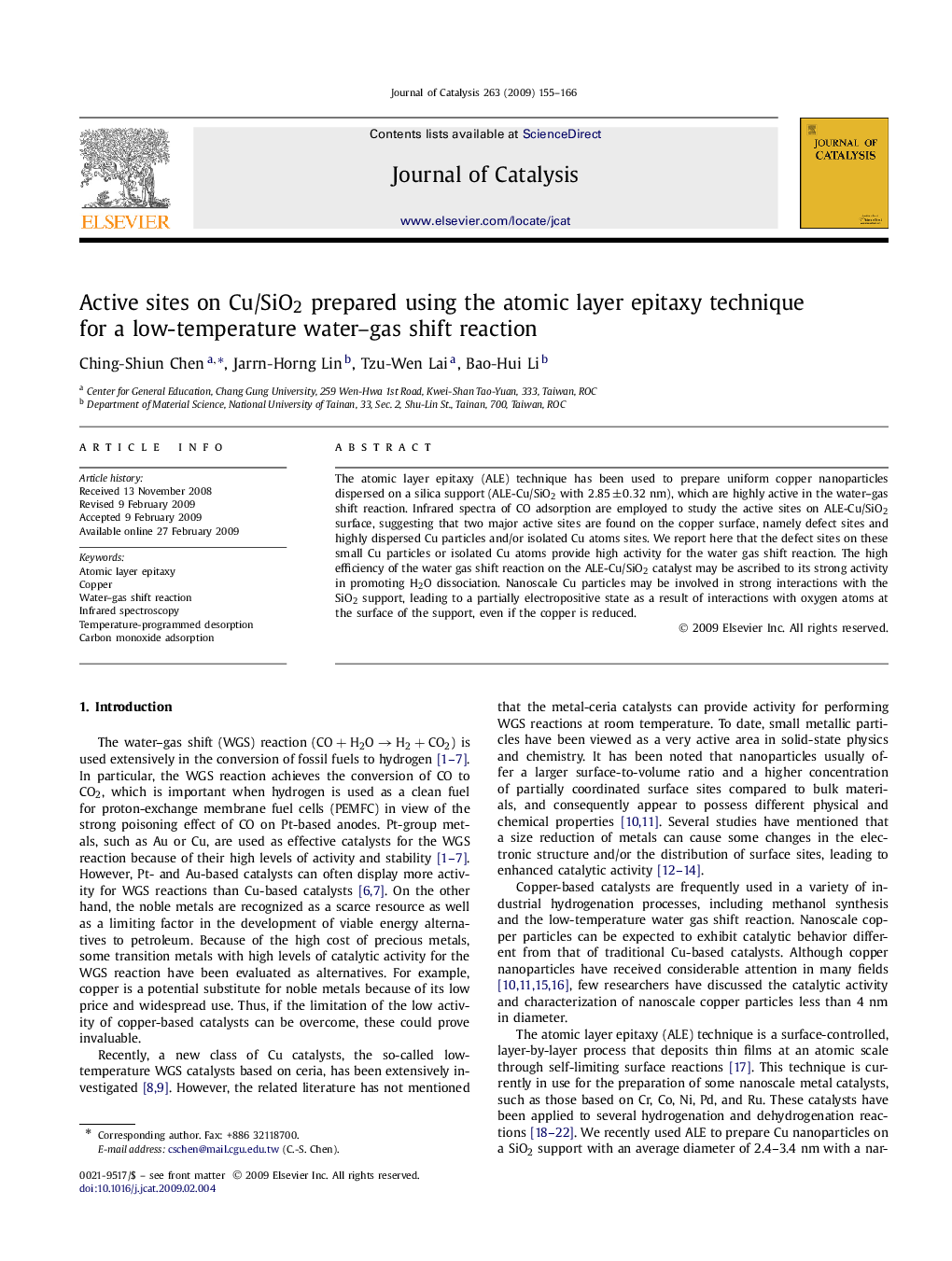| Article ID | Journal | Published Year | Pages | File Type |
|---|---|---|---|---|
| 62130 | Journal of Catalysis | 2009 | 12 Pages |
The atomic layer epitaxy (ALE) technique has been used to prepare uniform copper nanoparticles dispersed on a silica support (ALE-Cu/SiO2 with 2.85±0.32 nm2.85±0.32 nm), which are highly active in the water–gas shift reaction. Infrared spectra of CO adsorption are employed to study the active sites on ALE-Cu/SiO2 surface, suggesting that two major active sites are found on the copper surface, namely defect sites and highly dispersed Cu particles and/or isolated Cu atoms sites. We report here that the defect sites on these small Cu particles or isolated Cu atoms provide high activity for the water gas shift reaction. The high efficiency of the water gas shift reaction on the ALE-Cu/SiO2 catalyst may be ascribed to its strong activity in promoting H2O dissociation. Nanoscale Cu particles may be involved in strong interactions with the SiO2 support, leading to a partially electropositive state as a result of interactions with oxygen atoms at the surface of the support, even if the copper is reduced.
Graphical abstractAn ALE-Cu/SiO2 catalyst (Cu/SiO2 prepared by an atomic layer epitaxy method) has higher activity than an impregnated Cu catalysts (IM-Cu/SiO2) in the water–gas shift reaction.Figure optionsDownload full-size imageDownload high-quality image (125 K)Download as PowerPoint slide
